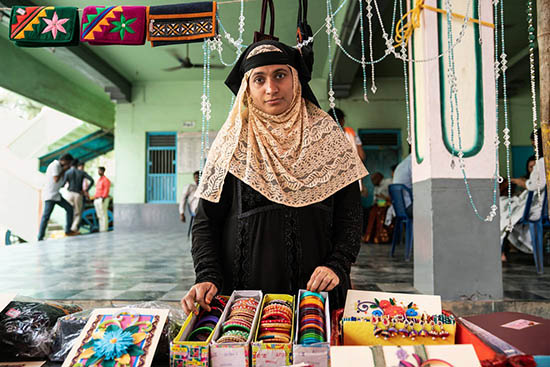谷歌在印度:希望、梦想和机遇
|
即使坐拥如此多新产品,谷歌的印度业务要想盈利还需等待数年。尽管印度互联网用户数量激增,但触及那罐金子仍然是一件难事,需要印度中产阶级大规模扩张。“每个人都认识到,印度是下一个10亿用户的来源地。”新德里科技新闻门户网站MediaNama的创始人尼克尔·帕瓦表示。“但印度还不是一个能够创造可观收入的地方。”至少目前还不是。“企业需要从20年、30年的时间跨度来看待印度业务,而不是10年。” 对谷歌很幸运的一点是,其印度战略迄今一直在淡化利润。莫迪总理正在推行一项旨在打造“国家龙头企业”的电子商务新政。这项政策已经遏制了亚马逊和沃尔玛在印度的发展势头。更重要的是,谷歌至少含蓄地凸显了其印度业务的“助力”色彩,而并没有一门心思地专注于商业化。它希望借此在印度民众和公司内部传播善意。在当地的谷歌高管中,你可以明显感觉到,他们认为自己正在做善事。 |
EVEN WITH THIS PROFUSION of new products, Google will need to wait years for its India operations to be profitable. Despite the rocketing numbers of Indian Internet users, reaching that pot of gold will be difficult and will need a sizable expansion of India’s middle class. “Everyone recognizes that India is where the next billion users are coming from,” says Nikhil Pahwa, founder of the MediaNama tech-news portal in New Delhi. “But India is not where substantial revenue will come from,” at least not yet. “Companies are looking at it from a 20-, 30-year horizon, not 10 years.” In a way, Google is fortunate its India strategy so far has downplayed profits. Prime Minister Modi is pushing a “national champion” e-commerce directive that already has stymied Amazon and Walmart. What’s more, by focusing at least implicitly on helping rather than on commercializing, Google is trying to spread goodwill, both among the Indian populace and within its own ranks. Among executives on the ground, there is a palpable sense that they are doing good. |

|
在世界上其他地方,谷歌与各路敌手的分歧越来越大。比如,让人权组织感到愤怒的是,谷歌有可能在中国审查其搜索引擎;欧洲监管机构援引反垄断法,对谷歌处以数十亿美元罚款。甚至在印度,谷歌也未能免于审查。路透社在2月中旬报道称,印度反垄断机构正在调查谷歌涉嫌滥用其安卓手机操作系统的垄断地位。 即使如此,谷歌在印度的高管们仍然洋溢着“很谷歌式的”热情。“互联网的力量在于,你会突然意识到自己身上的潜能。”该地区业务负责人阿南丹这样说道。这听起来像是“科技抵制潮”(techlash)一词在硅谷广为流行之前发出的声音。他讲述了印度村民在网上出售工艺品,偏远地区家庭访问教育网站的故事。“我们正处于互联网在世界上发挥积极作用的起点上。” 谷歌为做善事而付出的诸多努力,也有可能帮助它斩获靓丽的业绩。2014年,该公司与印度国家铁路服务公司合作,推出“谷歌站点”(Google Station),为每天乘坐火车的约 2300 万人安装 Wi-Fi 热点。自那以后,谷歌已经在400个印度火车站安装了热点。最近,谷歌在墨西哥的公交车站和拉各斯的公共广场推出了类似服务。善行必有善报。每当用户访问谷歌站点时,一个门户网站会收集他们的数据,并允许谷歌在专用网页上发布广告。尽管如此,谷歌的高管们还是用暧昧的慈善词汇来描述这个项目。“这是一种奇妙的连接方式。”森古普塔说。 一些贫穷的印度工人非常喜欢使用这种免费且快速的Wi-Fi上网。一天下午,在印度南部喀拉拉邦拥挤的科钦火车站,40岁的搬运工曼尼坎丹告诉我,他最近利用谷歌站点为准备迎接公务员的妻子下载了试题样本。曼尼坎丹在那里工作了10年。“她通过了。”他高兴地说。 谷歌对新用户的渴望,碰巧与它的慈善努力重叠在一起。事实上,谷歌已经因其“Saathis”(印地语中“朋友”的意思)项目而名扬印度。该项目于2015年启动,旨在吸引更多女性上网。在印度的互联网用户中,女性只占很小的比例。 |
Elsewhere in the world, Google is increasingly at odds with various antagonists, from human rights organizations peeved that Google might censor its search engine in China to European regulators who have fined Google billions of dollars over antitrust concerns. Google isn’t immune from scrutiny in India, either. In mid-February, Reuters reported that Indian antitrust authorities are investigating Google for alleged abuses on its Android mobile operating system. Even so, executives in India still bubble over with “Googley” enthusiasm. “The power of the Internet is you suddenly get ideas about what you can do,” says Anandan, the regional chief, sounding like a voice from a time before the word “techlash” became fashionable in Silicon Valley. He tells anecdotes about Indian villagers selling their crafts online and families in remote areas logging on to education sites. “We are in day zero of what the Internet can do in the world in a very positive way,” he says. Google’s efforts to do good also hold the potential for it to do extremely well. In 2014 it launched Google Station, in a partnership with India’s national railway service, to install Wi-Fi hotspots for the 23 million or so people who ride trains every day. It has since installed hotspots in 400 Indian train stations. Recently, Google launched a similar service at bus stops in Mexico and public squares in Lagos. The beneficence has benefits. When users log into a Google Station hotspot, a portal sucks up their data and allows Google to post ads on a dedicated web page. Google executives nevertheless describe the project in borderline philanthropic terms. “It is a fantastic way to connect,” Sengupta says. Some of India’s poorer workers take advantage of the free, fast Wi-Fi. One afternoon in the crowded train station of Kochi, the main city in India’s southern state of Kerala, M.R. Manikandan, a 40-year-old porter who has worked there for 10 years, tells me he recently used Google Station to download sample exams for his wife’s civil service test. “She passed,” he says happily. Google’s yearning for new users fortuitously overlaps with its charitable efforts. Indeed, it has become famous in India for its program of Saathis—the Hindi word for friend—which it launched in 2015 to help draw more women online. Women make up a small percentage of Internet users in the country. |

|
谷歌携手印度制造和零售巨头塔塔集团旗下的慈善机构塔塔信托,在印度各地20多万个村庄招募了约6万名所谓的“Saathi”女性志愿者,让她们教其他女性上网。在印度东部靠近孟加拉湾的安得拉邦一个名叫Thotlavalluru的小村庄,我采访了一位Saathi志愿者。据她透露,谷歌负责培训Saathi,并给她们每人赠送一部智能手机,而塔塔信托每个月会发放约40美元津贴。谷歌声称,Saathi志愿者迄今已培训了大约2200万人(其中大部分是女性),帮助她们掌握了一些基本技能,比如如何打WhatsApp电话、如何在线支付账单等等。
该项目的目标是,到今年年底前覆盖约30万个村庄。一些Saathi志愿者和她们的培训生已经抓住机会,利用新掌握的互联网技能开办了家庭作坊。比如,她们在YouTube上下载如何自制蜂蜜,如何给衬衫刺绣的教学视频。一天下午,几个妇女聚集在Thotlavalluru村的印度教寺庙外,向我展示她们的商品。“我在YouTube上学会了如何用线和石头来装饰手镯。”32岁的帕维恩·贝古姆说。她的丈夫是一位虔诚的穆斯林,不允许她外出打工。她现在把手镯卖给当地的客户。“很多妇女来我家学上网。”她说。“我最终将培训大约1200人。” |
Google partnered with Tata Trusts, the philanthropic arm of India’s manufacturing and retail conglomerate, and recruited about 60,000 so-called Saathis, all women, in more than 200,000 villages across India, to teach other women how to get online. Google trained the Saathis and gave them each a smartphone, while Tata pays them a stipend of about $40 a month, according to one Saathi I spoke to in the tiny village of Thotlavalluru in Andhra Pradesh state in eastern India, near the Bay of Bengal. Google claims the Saathis have so far trained about 22 million people, mostly women, in basic skills like how to make WhatsApp calls and pay bills online.
It aims to reach about 300,000 villages by the end of this year. Several Saathis and their trainees have seized the chance to start cottage industries with their new Internet skills, downloading instructional videos on YouTube on how to make homemade honey or embroider shirts, for example. One afternoon in Thotlavalluru, several women gathered outside the Hindu temple of the village to show me their wares. “I learned how to decorate bangles with thread and stones on YouTube,” says Parveen Begum, 32, whose husband, a devout Muslim, did not permit her to work outside the house. She now sells her bangles to local clients. “Women come to my house to learn the Internet,” she says. “I will train about 1,200 people in the end.” |













